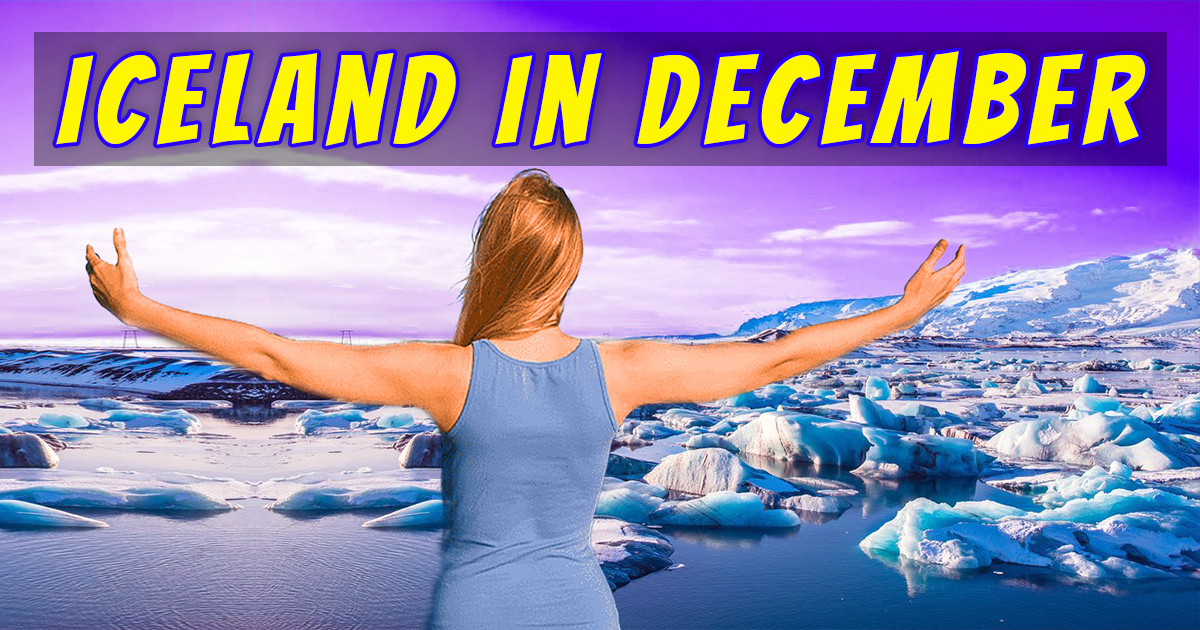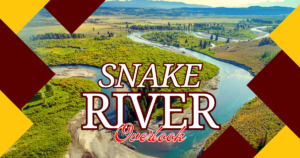Iceland transforms into a magical winter wonderland in December, making it an ideal time to visit for those who love snow, stunning landscapes, and unique experiences. Here are seven reasons why visiting Iceland in December is a must:
- Northern Lights Viewing: December is one of the best months to catch the mesmerizing Northern Lights, with long, dark nights providing ample opportunity to witness this natural phenomenon.
- Winter Festivals: Experience Icelandic Christmas traditions and the Reykjavik Winter Lights Festival, which brings festive cheer and beautiful illuminations to the city.
- Ice Caves and Glaciers: December is the perfect time to explore the breathtaking ice caves and massive glaciers that Iceland is famous for, as they are more stable during winter.
- Fewer Tourists: While summer is peak tourist season, winter in Iceland offers a quieter experience with fewer crowds, allowing you to enjoy the sights at your own pace.
- Winter Sports: From snowmobiling to skiing and snowshoeing, December is ideal for those looking to engage in thrilling winter sports in Iceland’s snowy terrain.
- Hot Springs: Relaxing in Iceland’s natural hot springs, like the Blue Lagoon, is even more magical when surrounded by snow and chilly temperatures.
- Unique Landscapes: The winter months offer a completely different view of Iceland’s landscapes, with snow-covered mountains, frozen waterfalls, and icy coastlines.
These reasons make Iceland in December a perfect destination for travelers seeking adventure and beauty in a serene winter setting.
Weather in Iceland in December: What to Expect
The weather in Iceland in December can be unpredictable, but it’s part of the adventure! Winter in Iceland is cold, but not as extreme as many people expect. Temperatures in Reykjavik, the capital, typically range from -1°C to 4°C (30°F to 39°F), though it can feel colder due to wind and occasional snowfall.
- Snow and Ice: Snow is common, especially in the northern parts of the country, making for a beautiful, white-covered landscape. Roads may be icy, so driving conditions can be challenging, but the main routes are well-maintained.
- Daylight Hours: December is one of the darkest months of the year, with the sun rising around 11 a.m. and setting by 3 p.m. However, the long nights make it a prime time for Northern Lights hunting.
- Wind and Storms: Iceland is known for its strong winds, and winter storms are not uncommon. Be prepared for gusts and occasional road closures if a storm hits.
Despite the cold, Iceland’s weather in December adds to the wintery charm and creates perfect conditions for enjoying the country’s unique attractions.
Northern Lights in Iceland in December: How to See Them
One of the biggest draws for visiting Iceland in December is the chance to see the Northern Lights (Aurora Borealis). The long, dark nights create ideal conditions for spotting this incredible natural phenomenon, which lights up the sky with vibrant green, purple, and pink colors.
To increase your chances of seeing the Northern Lights:
- Head Away from City Lights: The best viewing spots are away from urban areas like Reykjavik, where light pollution is minimal. Popular locations include Thingvellir National Park, Kirkjufell mountain, and the remote Westfjords.
- Check the Aurora Forecast: Iceland has a dedicated Aurora forecast that predicts the likelihood of Northern Lights activity. Clear skies and high aurora activity are key factors for a successful sighting.
- Join a Tour: If you’re not confident about finding the best locations on your own, consider joining a Northern Lights tour. These tours are led by local experts who know where and when to look for the lights, maximizing your chances of seeing them.
The Northern Lights in Iceland in December are an unforgettable experience and one of the top reasons people travel to Iceland during the winter months.
Top Winter Activities to Do in Iceland in December
Iceland in December offers a variety of winter activities that allow you to explore the country’s icy landscapes and experience its natural beauty. Here are some of the best activities to try:
- Explore Ice Caves: December is a great time to visit Iceland’s famous ice caves, including the Crystal Ice Cave in Vatnajökull Glacier. These caves are only accessible during the winter and offer a surreal experience of walking through frozen blue tunnels.
- Snowmobiling: For adventure seekers, snowmobiling across glaciers like Langjökull is an exhilarating way to see Iceland’s snowy landscapes.
- Visit Waterfalls: Visit Waterfalls: Iceland’s waterfalls, such as Gullfoss and Skogafoss, are even more impressive in winter, surrounded by snow and ice. Some may even partially freeze, creating a magical scene. Explore Iceland’s waterfalls.
- Skiing and Snowboarding: Iceland has several ski resorts, such as Bláfjöll, located near Reykjavik. December is a great time for skiing or snowboarding, with fresh powder and stunning views.
- Whale Watching: Yes, you can go whale watching in Iceland even in winter! Tours depart from Reykjavik and Akureyri, offering a chance to see orcas, humpbacks, and other species in their natural habitat.
These winter activities in Iceland provide exciting ways to explore the country’s wild beauty during the coldest time of the year.
What to Pack for Iceland in December
Packing for Iceland in December requires some thoughtful preparation, as the weather can be cold and unpredictable. Here’s a list of essential items you’ll need for a comfortable trip:
- Warm Layers: Iceland’s cold temperatures mean layering is essential. Pack thermal base layers, wool sweaters, and a down jacket to stay warm.
- Waterproof Outerwear: Iceland’s weather is known for being wet and windy, so bring a waterproof jacket and pants to stay dry.
- Sturdy Boots: Whether you’re walking around Reykjavik or hiking on glaciers, waterproof, insulated boots with good grip are a must.
- Accessories: Don’t forget a warm hat, gloves, and a scarf to protect yourself from the cold and wind.
- Swimwear: Yes, swimwear! Iceland is famous for its geothermal hot springs, and you’ll want a bathing suit for a relaxing soak in places like the Blue Lagoon.
- Headlamp: With limited daylight in December, a headlamp can be useful for navigating dark roads or exploring in the early morning or evening.
By packing these essentials, you’ll be well-prepared to face Iceland’s winter weather and fully enjoy your trip. For more details on Iceland’s stunning landscapes and seasonal highlights, check out our article on Iceland in November. This guide offers additional insights into the country’s unique attractions and winter experiences.
Is December a Good Time to Visit Iceland?
Absolutely! December is a fantastic time to visit Iceland, especially if you’re drawn to winter activities and holiday celebrations. Here are some pros and cons to help you decide:
- Pros:
- Northern Lights: December offers excellent opportunities to see the Northern Lights.
- Winter Activities: Ice caving, snowmobiling, and skiing are in full swing.
- Christmas and New Year: Experience Iceland’s festive Christmas markets, Yule traditions, and incredible New Year’s Eve fireworks.
- Cons:
- Cold Weather: It’s cold, so you need to be prepared for winter conditions.
- Limited Daylight: With only about 4-5 hours of daylight, your sightseeing time is limited.
Despite the shorter days, the magical atmosphere and unique experiences make December in Iceland a wonderful time to visit.
Where to Stay in Iceland in December
When planning your trip to Iceland in December, it’s important to choose accommodations that offer warmth, comfort, and easy access to winter activities. Here are some popular options:
- Reykjavik: Iceland’s capital is the most popular place to stay, offering a variety of hotels, guesthouses, and Airbnbs. Staying in Reykjavik gives you access to great restaurants, museums, and Christmas markets.
- Countryside Hotels: If your goal is to see the Northern Lights, consider staying outside of the city. Hotels like Hotel Rangá and Frost and Fire Hotel offer beautiful, remote locations with fewer light disturbances.
- Budget Options: For budget travelers, there are many hostels and guesthouses throughout the country. KEX Hostel in Reykjavik is a popular choice for its social atmosphere and affordable rates.
Whether you’re looking for luxury, mid-range, or budget accommodations, Iceland in December has something for every traveler.
Conclusion: Iceland in December – A Winter Wonderland
Visiting Iceland in December is an unforgettable experience, offering breathtaking landscapes, exciting winter activities, and the magic of the Northern Lights. While the weather can be cold and the days short, the festive atmosphere, fewer tourists, and unique adventures make it one of the best times to experience the true essence of Iceland.
From exploring ice caves and soaking in geothermal hot springs to witnessing the auroras dance across the sky, Iceland in December is truly a winter wonderland waiting to be explored.
FAQs About Visiting Iceland in December
- How cold is Iceland in December?
In December, temperatures in Iceland range from -1°C to 4°C (30°F to 39°F), but the wind can make it feel colder. - Can you see the Northern Lights in Iceland in December?
Yes, December is one of the best months to see the Northern Lights due to the long nights and dark skies. - What should I wear in Iceland in December?
Pack warm, layered clothing, waterproof jackets and pants, insulated boots, and accessories like hats and gloves to stay warm and dry. - Is December a good time to visit Iceland for outdoor activities?
Yes! December is perfect for winter sports, exploring ice caves, and viewing frozen waterfalls. - Are roads in Iceland safe in December?
Roads in Iceland can be icy and slippery, especially in rural areas. It’s important to rent a 4×4 vehicle and check road conditions regularly.
Internal Link
- Visit my homepage for more travel tips and guides to winter destinations.

Joseph Bush is a seasoned writer and researcher with over 7 years of experience covering a wide range of general topics, from lifestyle and technology to business and current events. He is dedicated to producing fact-checked, reader-friendly content that informs, engages, and empowers readers.
Throughout his career, Joseph has followed strict editorial guidelines, relied on reputable sources, and ensured every article meets the highest standards of accuracy and clarity. His expertise spans multiple fields, allowing him to explain complex topics in a way that’s easy to understand.
Passionate about continuous learning, Joseph stays updated on industry trends and best practices to deliver trustworthy, well-rounded insights. Readers can rely on his work for its credibility, depth, and real-world relevance.




